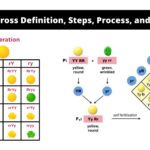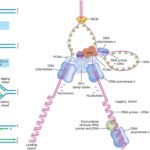Describe the carbon cycle, limited to: photosynthesis, respiration, feeding, decomposition, formation of fossil fuels and combustion
Describe the carbon cycle, limited to: photosynthesis, respiration, feeding, decomposition, formation of fossil fuels and combustion
Please login to submit an answer.
The carbon cycle is a fundamental ecological process that describes the movement of carbon through various reservoirs in the environment, including the atmosphere, biosphere, oceans, and geosphere. This cycle involves several key processes: photosynthesis, respiration, feeding, decomposition, the formation of fossil fuels, and combustion. Here’s a detailed explanation of each component:
1. Photosynthesis
Photosynthesis is the process by which green plants, algae, and some bacteria capture carbon dioxide (CO₂) from the atmosphere and convert it into organic compounds using sunlight. During this process, plants absorb CO₂ and water (H₂O) to produce glucose (C₆H₁₂O₆) and oxygen (O₂). The overall chemical reaction can be summarized as:
This process not only provides energy-rich organic molecules for plants but also releases oxygen into the atmosphere, which is essential for life.
2. Respiration
Respiration is the process by which living organisms (including plants and animals) convert glucose and oxygen into energy, releasing carbon dioxide and water as byproducts. This process occurs in all aerobic organisms and can be represented by the following equation:
Through respiration, carbon that was previously fixed during photosynthesis is returned to the atmosphere as CO₂.
3. Feeding
Feeding represents the transfer of carbon through food chains and food webs. When herbivores consume plants, they assimilate the carbon contained in plant tissues into their own bodies. Similarly, when carnivores eat herbivores (or other carnivores), they obtain carbon from their prey. This movement of carbon through various trophic levels is essential for energy transfer within ecosystems.
4. Decomposition
Decomposition is the process by which dead organic matter (plants and animals) is broken down by decomposers such as bacteria and fungi. During decomposition, complex organic compounds are converted back into simpler substances, releasing carbon dioxide back into the atmosphere or soil. Decomposers play a critical role in recycling nutrients and ensuring that carbon is returned to the ecosystem for use by plants.
5. Formation of Fossil Fuels
Over geological timescales, some organic matter that does not decompose completely becomes buried under sediments and transformed into fossil fuels (coal, oil, natural gas) through heat and pressure. This process sequesters carbon in a stable form for millions of years. Fossil fuels represent a significant reservoir of carbon that can be released back into the atmosphere when burned.
6. Combustion
Combustion refers to the burning of fossil fuels or biomass (like wood), which releases stored carbon back into the atmosphere as carbon dioxide. The combustion process can be summarized by the equation:
This release of CO₂ contributes to atmospheric greenhouse gas concentrations and plays a significant role in climate change.
- Share on Facebook
- Share on Twitter
- Share on LinkedIn
Helpful: 0%




